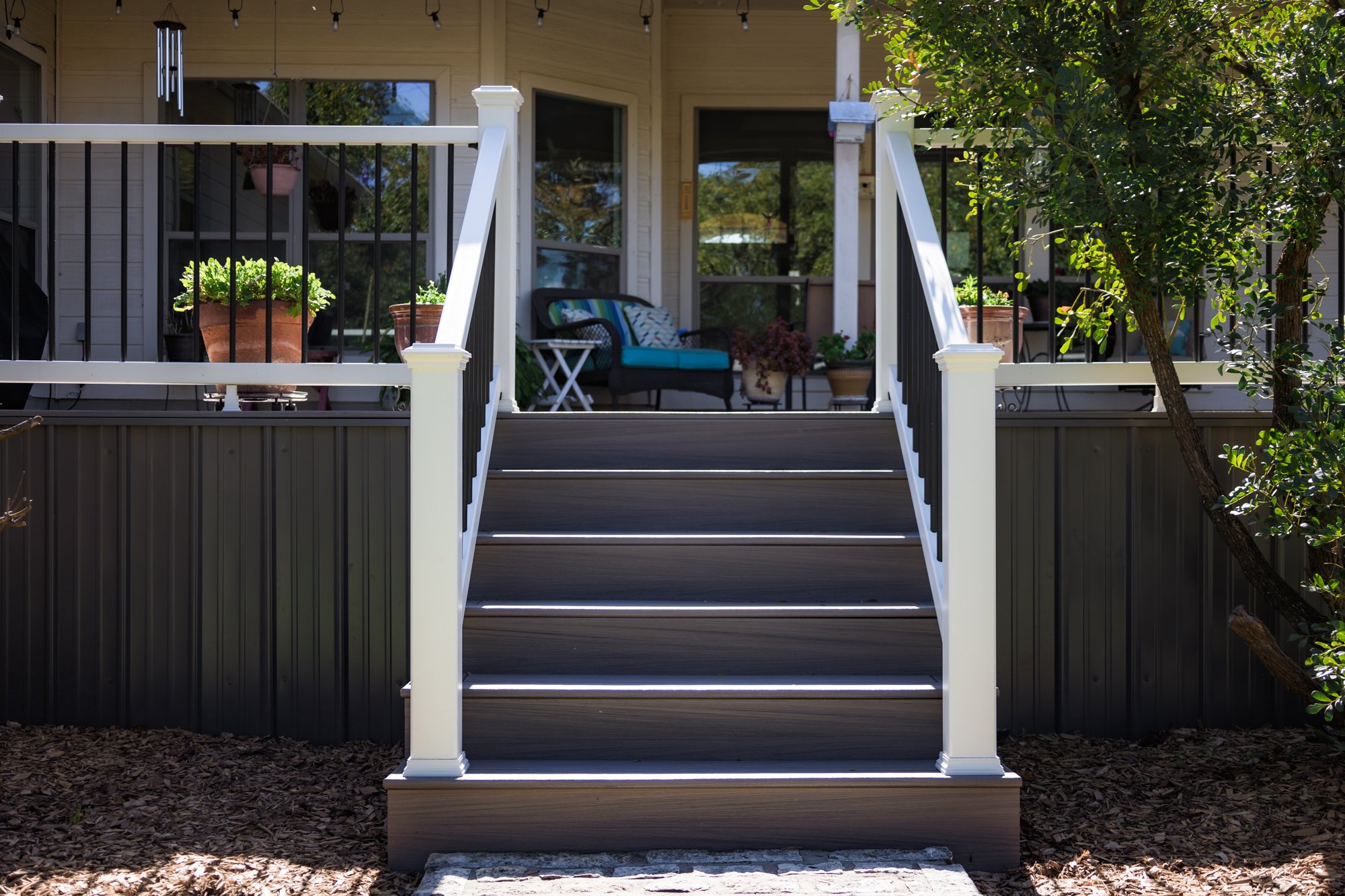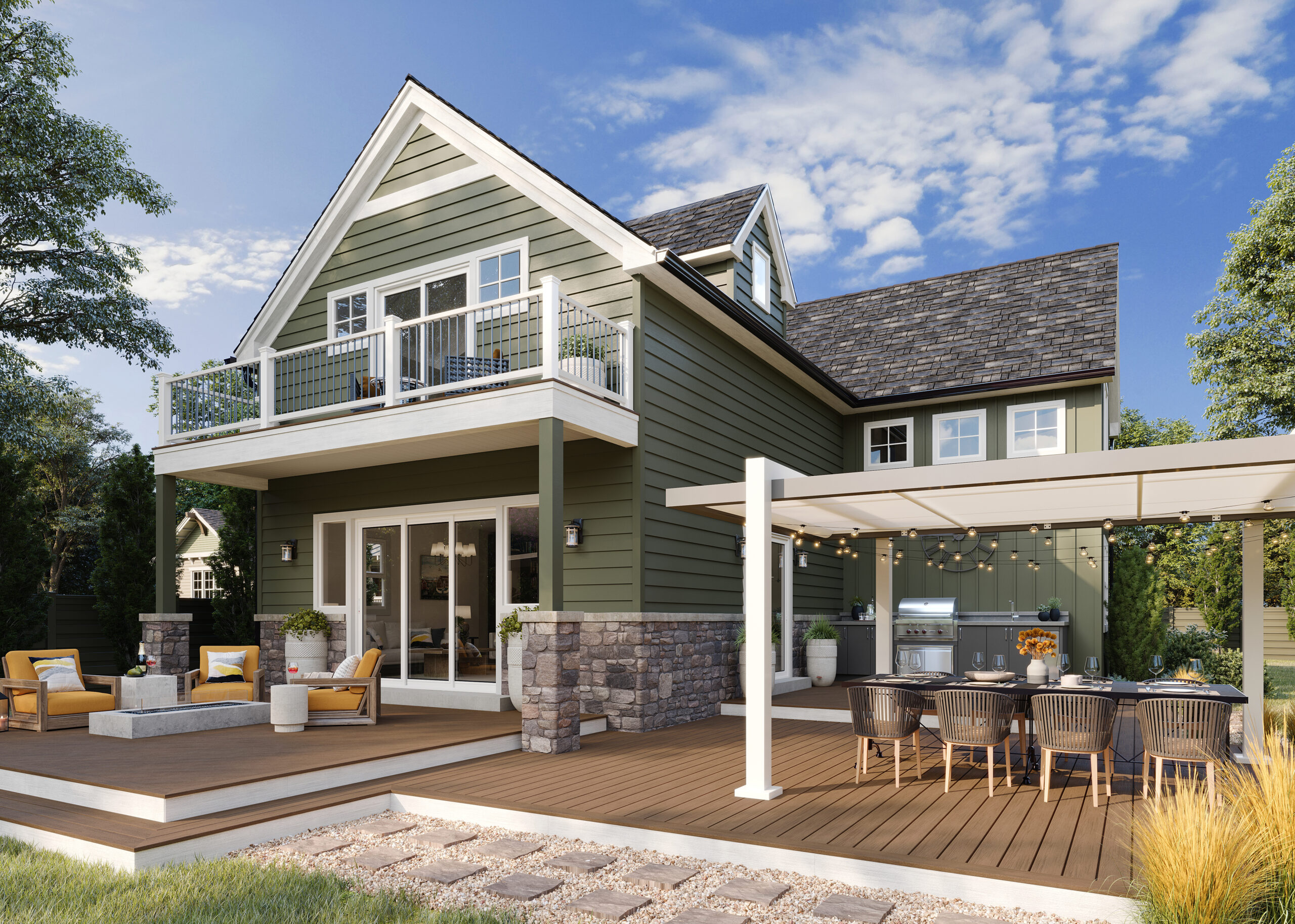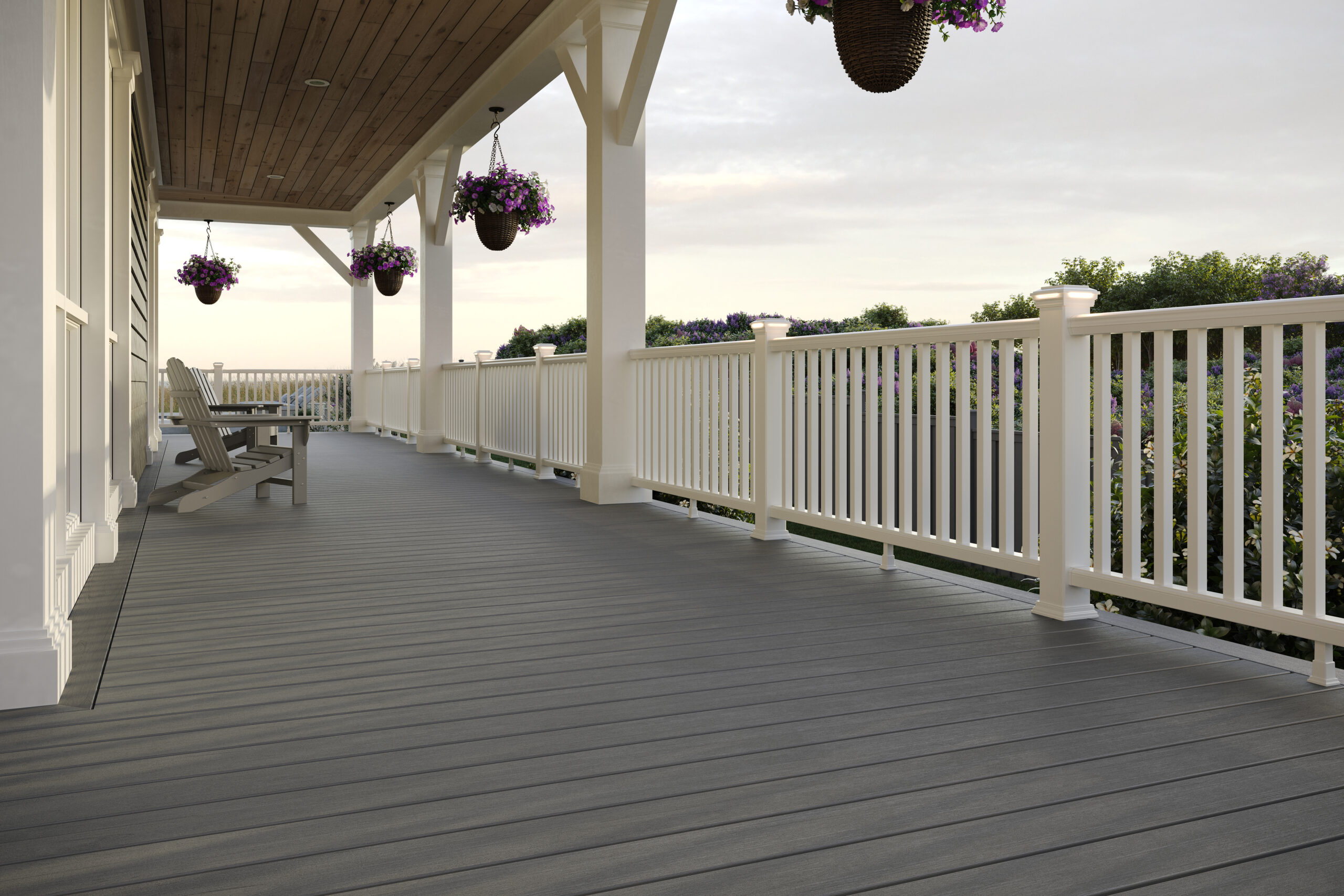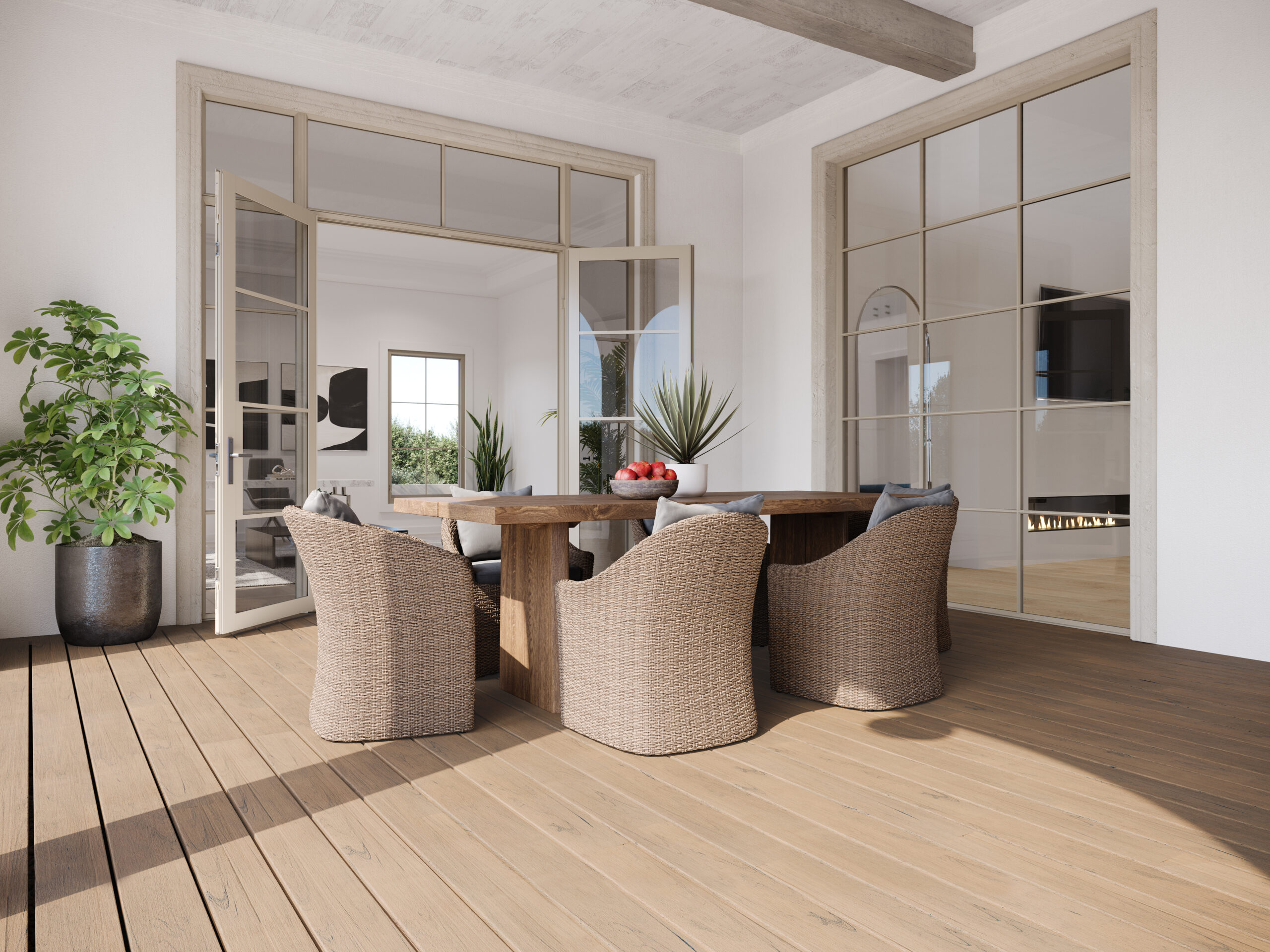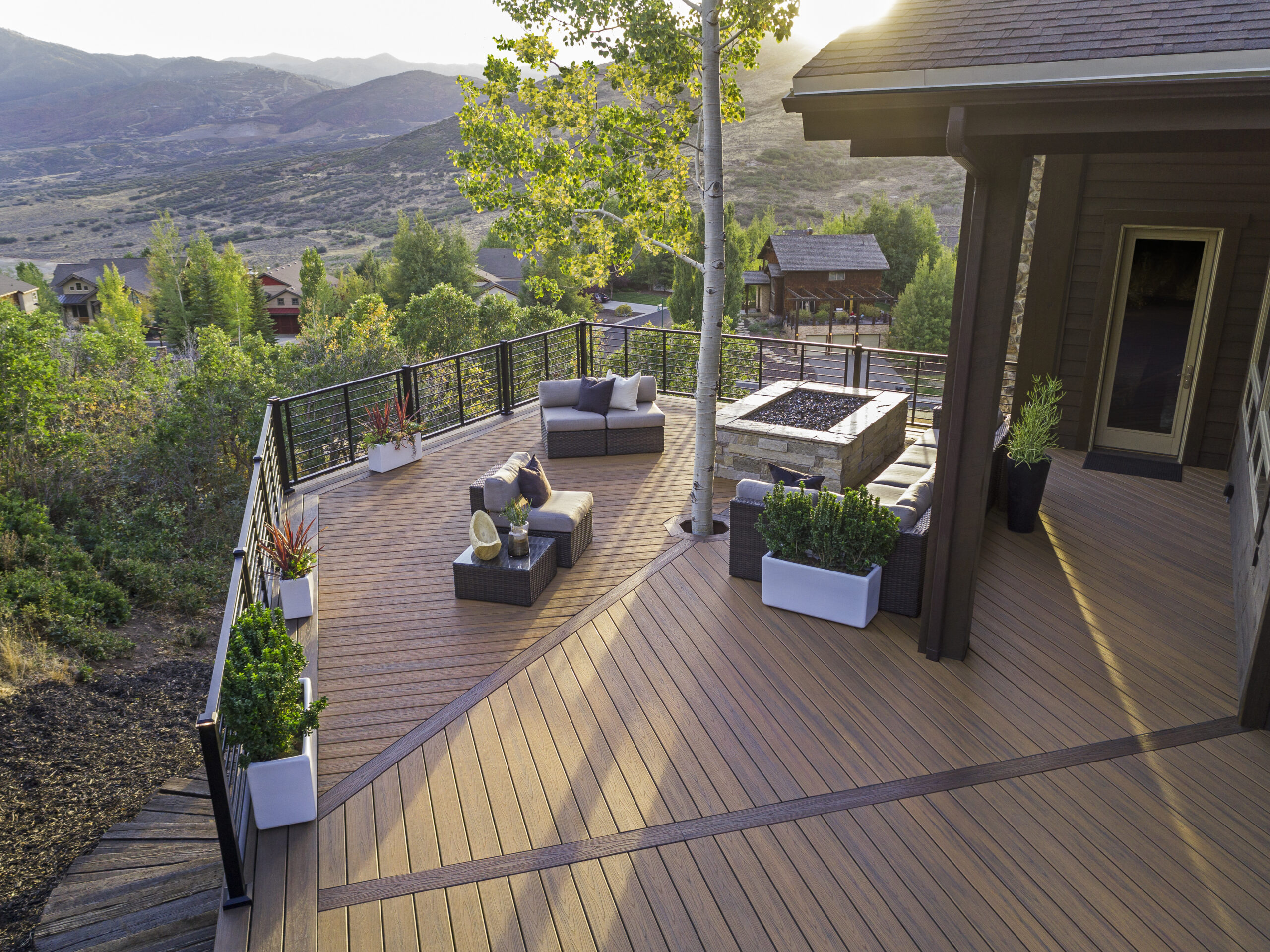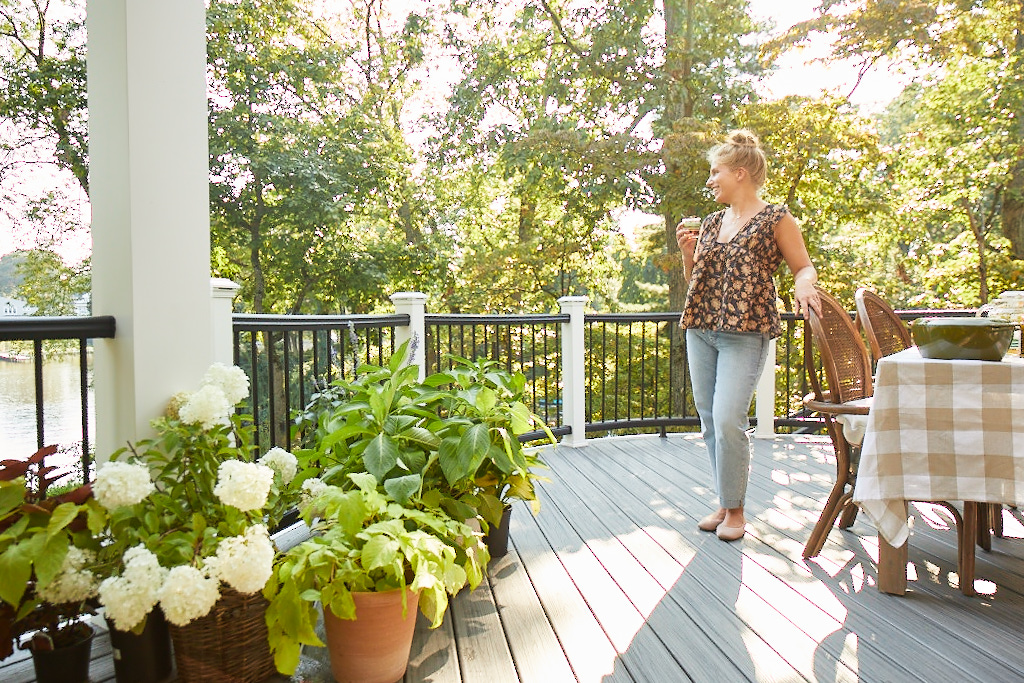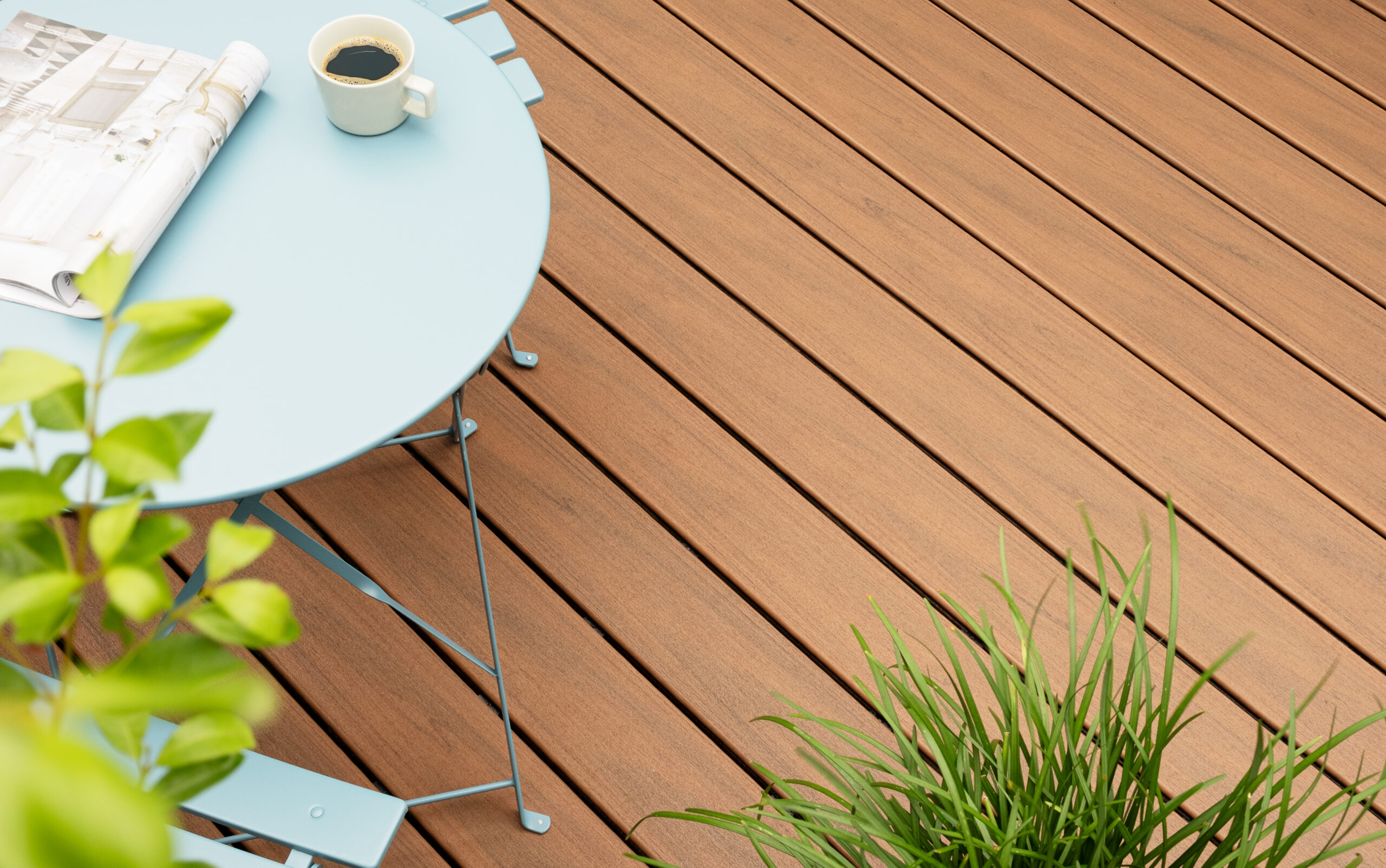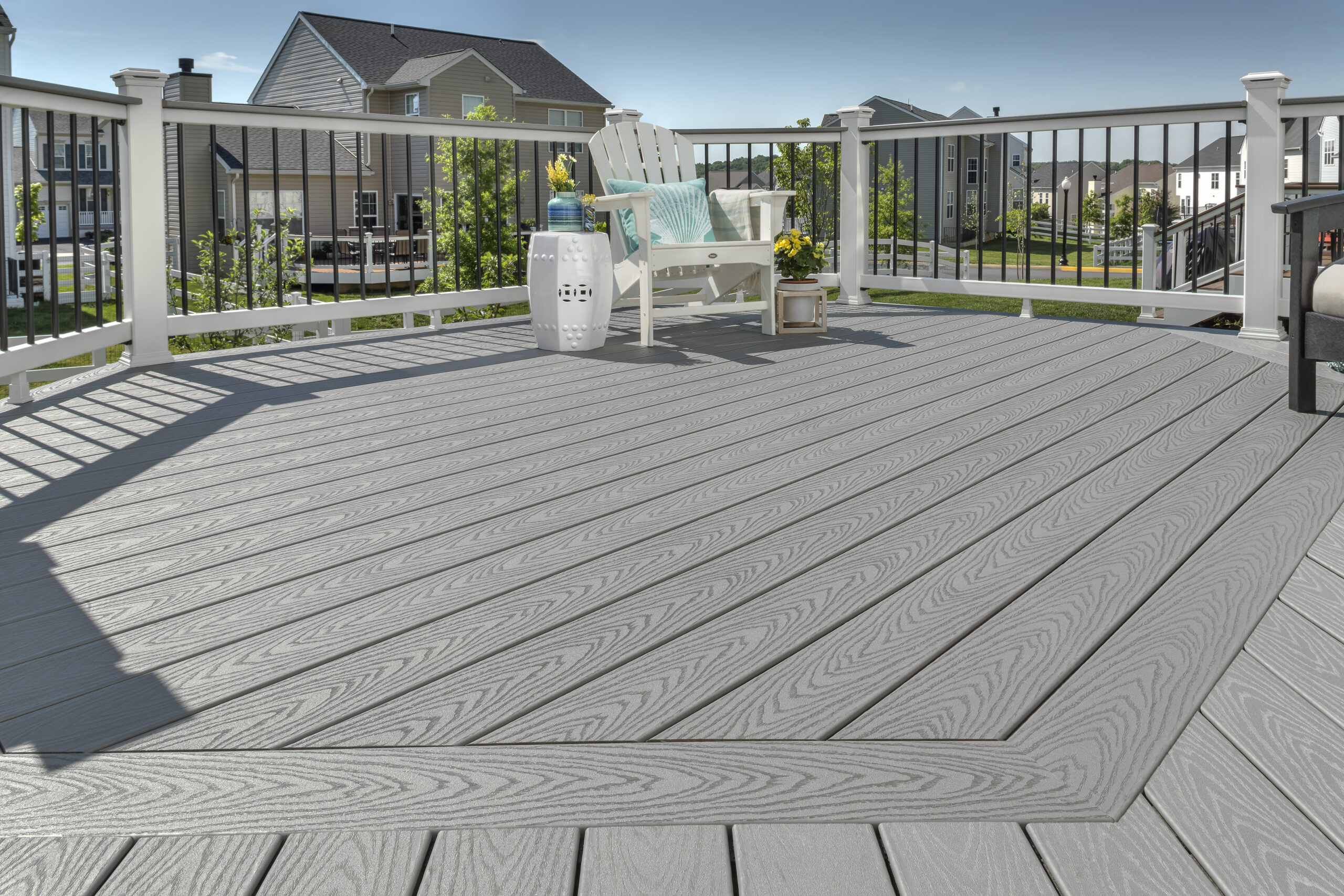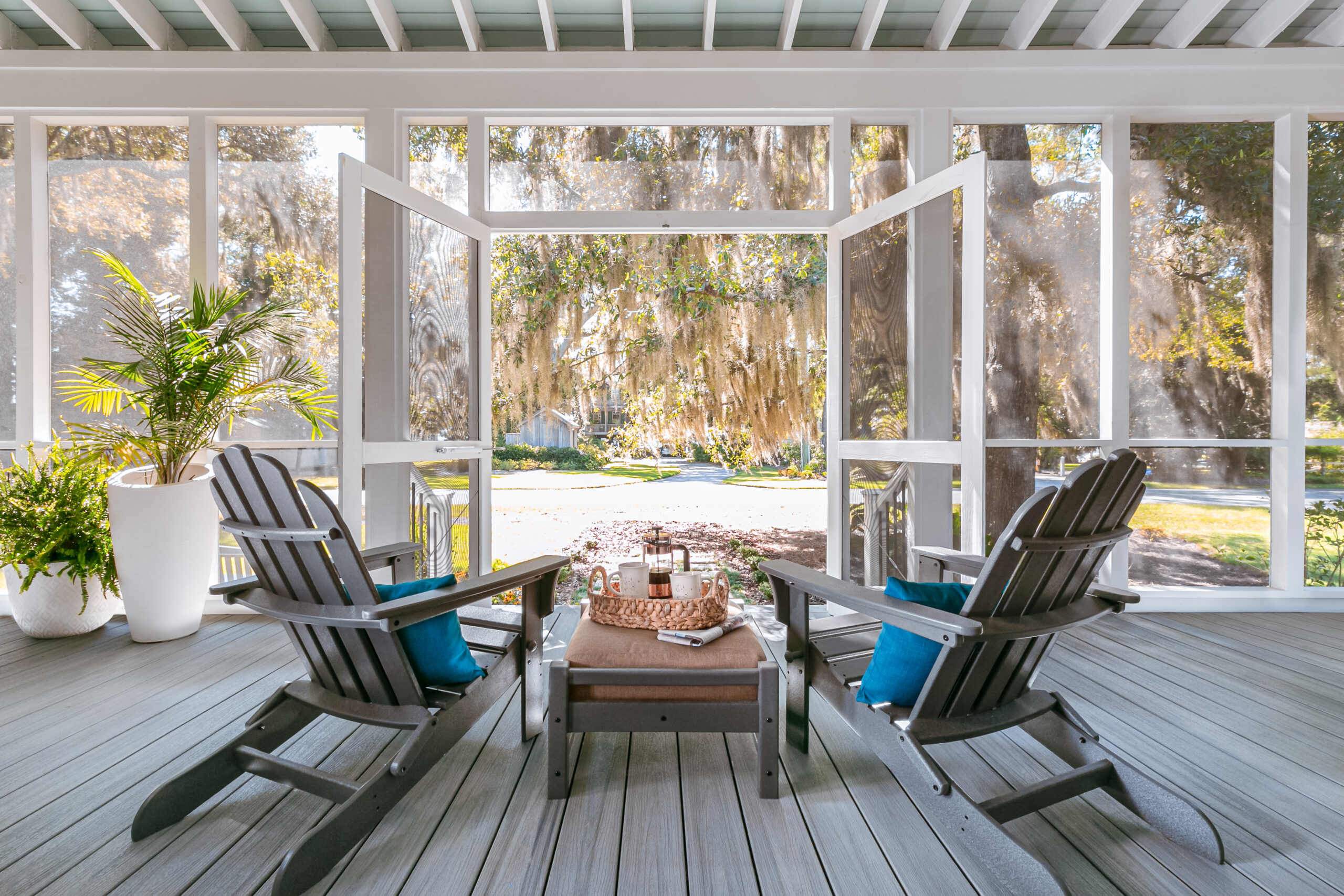RANCH ROAD CONSTRUCTION
More and more homeowners are choosing sustainable decking materials that reduce waste and minimize long-term environmental impact. Trex leads the way with highly sustainable materials, long-lasting boards, and no need for harmful chemicals or sealants.
If you want to learn how it compares to other “green” options, keep reading. Or, feel free to reach out to us anytime for expert advice and a custom design consultation.
Did You Know? Trex has recycled over 5 billion pounds of plastic, more than the entire nation of China in a year.
Before it becomes a deck, every Trex board starts as discarded plastic and sawdust. These are materials that would typically be thrown away. Trex collects items like grocery bags, food wrappers, and pallet wrap that might otherwise end up in landfills or pollute the ocean. Using advanced manufacturing, they transform this waste into durable, high-performance decking.
The wood content is just as intentional. Rather than cutting down trees, Trex uses sawdust left over from furniture and flooring production. This material would usually be burned or sent to a landfill.
This isn’t greenwashing. It’s industrial-scale recycling, and sustainability you can stand on, literally.
What Makes Trex Sustainable Decking?
Sustainable decking isn’t just about lasting longer—it’s about starting better. That’s where Trex stands apart. These boards require no trees to be cut, no new plastic to be produced, and no toxic paints or stains that can leach into your soil or nearby waterways. In fact, with every deck built, Trex keeps plastic out of landfills and harmful chemicals off your property. Not surprisingly, they were named one of Barron’s Top 100 Sustainable Companies of 2025.
For homeowners, this means more than just peace of mind. In practical terms, the larger your deck, the more plastic you remove from the waste stream—and the more impact you make. In other words, it’s a rare opportunity where adding value to your home also brings measurable value to the environment. Trex makes that possible.
Skip the Landfill for the Lifestyle

Plastic with a Purpose
Every Trex deck starts with plastic waste that would otherwise end up in landfills or oceans. Trex recycles grocery bags, stretch wrap, and food packaging—things that are nearly impossible for curbside recycling programs to handle—and gives them a second life as durable, beautiful decking.
On average, a 400-square-foot Trex deck uses the equivalent of 140,000 plastic bags. So the bigger the deck, the bigger the environmental impact you make—right in your own backyard.

Reclaimed, Not Deforested
Unlike hardwood decking, which contributes to deforestation and rainforest depletion, Trex uses reclaimed sawdust from furniture and flooring factories. No trees are cut to make Trex boards—ever.
Without Trex, this wood dust would typically be burned or dumped. Trex blends it with recycled plastic to create a high-performance material that saves forests while eliminating waste. You get the beauty of wood without the environmental damage.
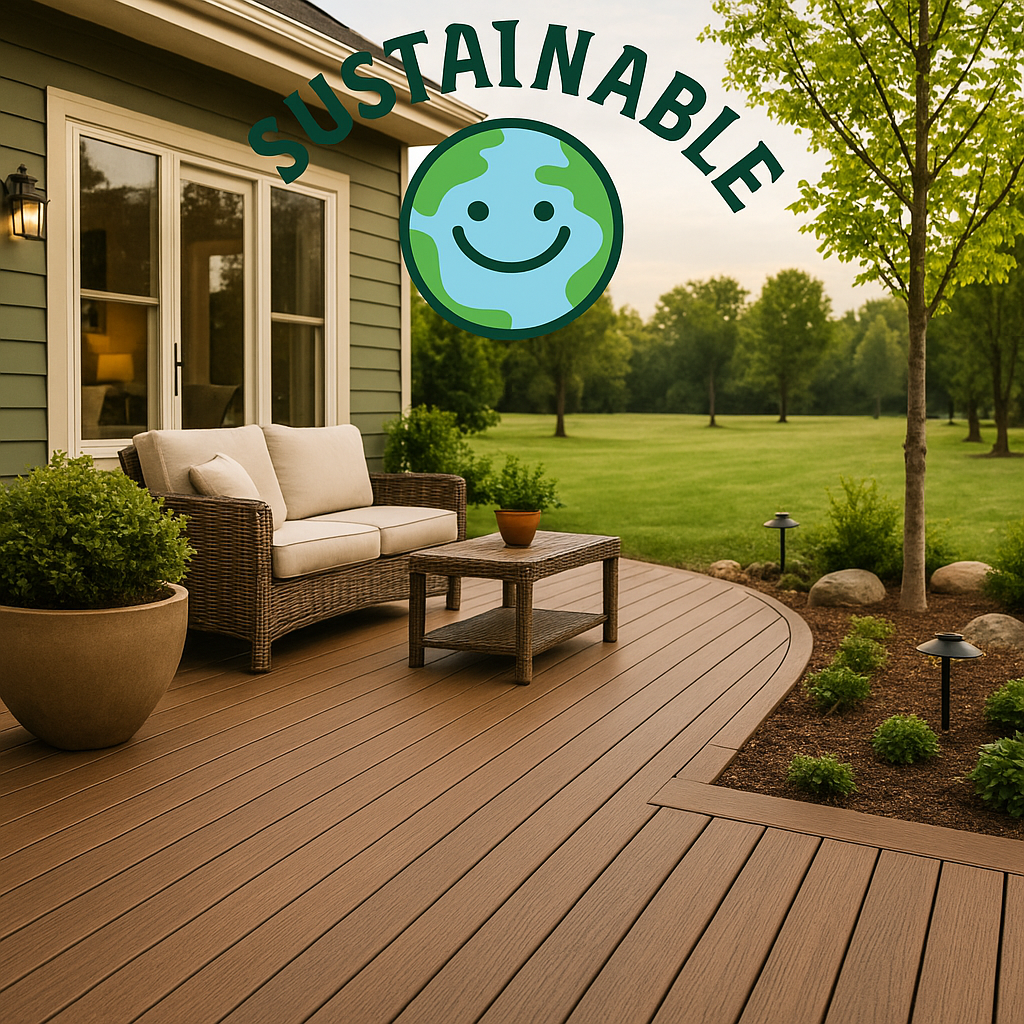
Zero Toxins for the Planet
Paint and stain are two of the largest contributors to microplastic pollution. Wood decks often need to be coated with sealants every 1–2 years, releasing chemicals and plastic particles into your soil and water.
Trex requires none of that. Its shell is engineered to resist fading and staining without any toxic coatings. That means less maintenance for you—and less harm to the environment. It’s beauty with responsibility built in.
Not All Decking is Built for the Future
When it comes to outdoor living, your material choice matters more than you think. Many common decking and patio options come with hidden environmental costs—like deforestation, pollution, chemical runoff, and high carbon output. From tropical hardwoods to concrete slabs, the impact often goes far beyond your backyard.
Before you choose, take a closer look at how these materials really stack up in terms of sustainability.
Treated Lumber:
Short-Term Solution, Long-Term Problem
Treated wood is often seen as a budget-friendly option, but its environmental cost adds up fast. Pressure-treated lumber is saturated with chemical preservatives that can leach into soil and water over time. It also requires regular staining and sealing, which contribute to microplastic and chemical pollution. Worse, it rarely lasts more than a decade—meaning more trees cut and more waste added to landfills.
Cedar & Redwood:
Natural Beauty, Ecological Loss
These softwoods are beautiful but unsustainable when harvested at scale. Old-growth cedar and redwood forests take centuries to regrow, and most boards sold today are sourced from logging operations that contribute to habitat loss and biodiversity collapse. Though marketed as “eco-friendly,” their environmental footprint tells a different story—especially when refinishing is required every few years.
Ipe & Exotic Hardwoods:
From Rainforest to Your Backyard
Ipe, mahogany, and other tropical hardwoods are extremely dense and durable—but their journey begins with deforestation in some of the most vulnerable ecosystems on Earth. Harvesting these woods leads to illegal logging, displacement of Indigenous communities, and the destruction of carbon-rich rainforests. For many homeowners, the cost isn’t just financial—it’s ethical.
Concrete & Pavers:
Stone pavers and concrete patios are durable, but they come with one of the highest embodied carbon costs of any building material. Concrete production alone accounts for over 8% of global CO₂ emissions. And once installed, it offers no environmental upside—just more heat retention, runoff, and energy usage.
PVC Decking:
Plastic with a Price
PVC decking is fully synthetic, made from virgin plastic and chemical fillers that are difficult or impossible to recycle. Its production generates significant greenhouse gas emissions, and disposal at the end of its lifespan adds to the global plastic waste crisis. While it may look low-maintenance on the surface, its environmental footprint lasts far longer than the deck itself.
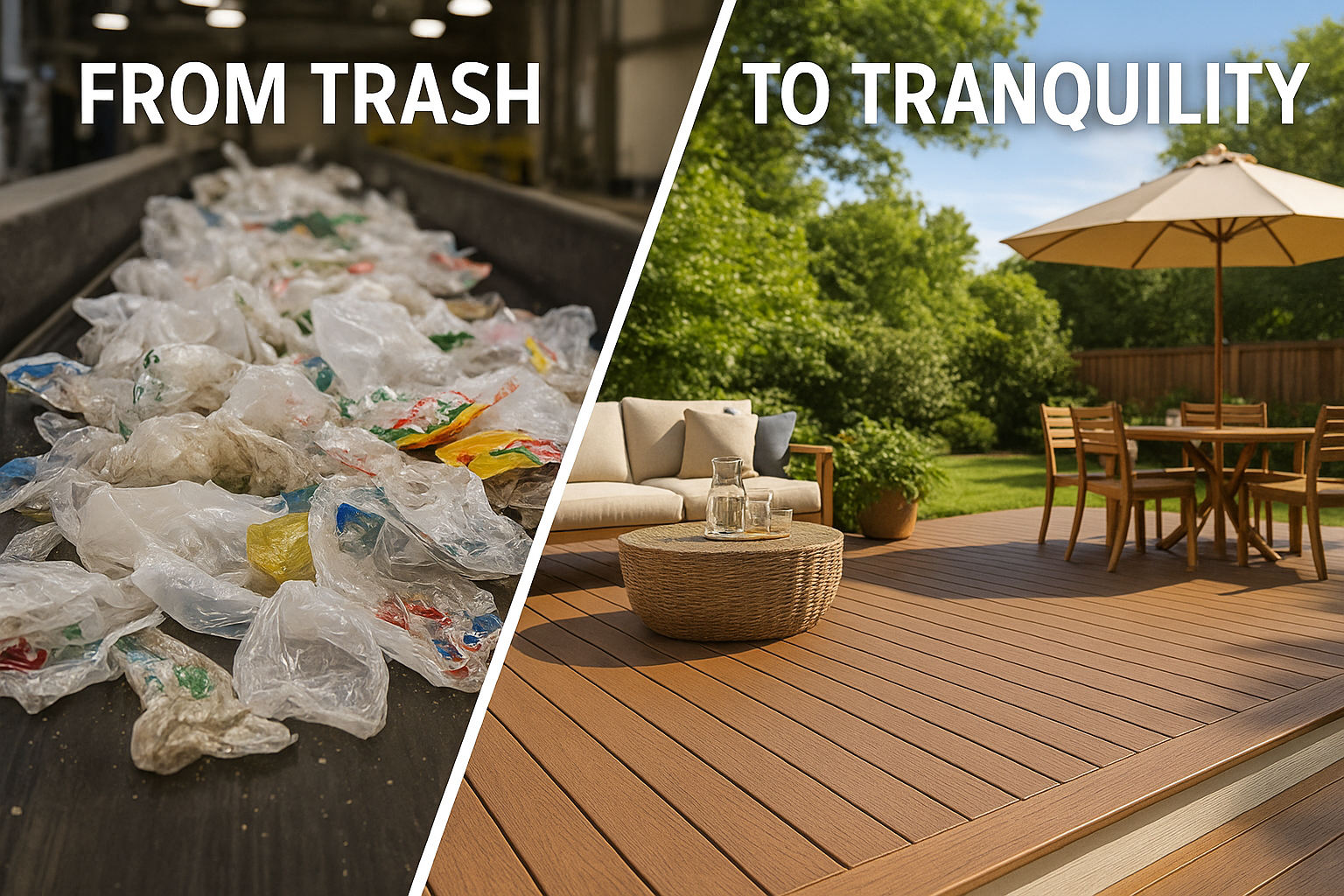
Size Matters – The Bigger the Deck, the Bigger the Impact.
A deck isn’t just something you build for today — it’s something you live with for decades. And with most materials, that longevity comes at a cost: chemical runoff, deforestation, short lifespans, and waste that ends up right back in the environment.
Trex changes that equation. By turning discarded plastic and sawdust into something beautiful and long-lasting, Trex transforms what was once harmful into something purposeful. The bigger your deck, the bigger the impact — keeping thousands of pounds of waste out of landfills and waterways, and giving it a second life under your feet.
It’s not just sustainable decking. It’s a smarter, more responsible way to build a better future.
Sustainable Decking Built with Purpose
At Reddy Pros, we believe building a beautiful outdoor space shouldn’t come at the planet’s expense. That’s why we don’t just recommend Trex—we align with its mission. Every deck we build using Trex diverts thousands of plastic bags, wraps, and scraps from the environment and gives them a long, purposeful second life.
Our team is trained not only in proper installation but in intentional building practices that reduce waste, minimize impact, and maximize long-term value. From the first conversation to the final fastener, we take pride in helping homeowners create outdoor spaces that reflect their style and values—especially when those values include protecting the world their deck looks out upon.
Whether your dream deck is modest or massive, we’ll help you build it with care, craftsmanship, and conscience.
REDDY PROS REVIEWS
SUBSCRIBE TO OUR NEWSLETTER

